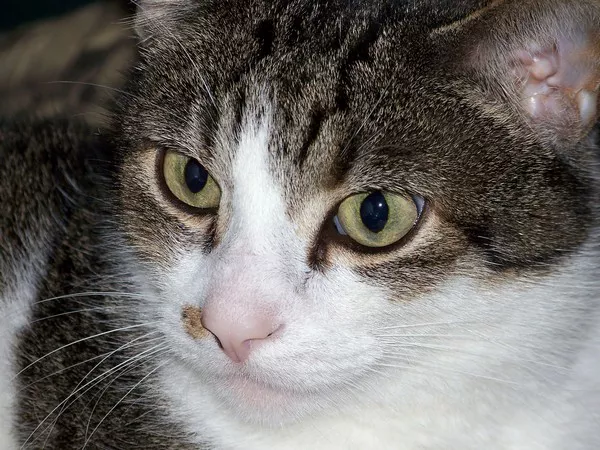Burmese cats, known for their affectionate nature and playful demeanor, are not only delightful companions but can also be trained to showcase their intelligence through tricks. Training your Burmese cat not only provides mental stimulation but also strengthens the bond between you and your feline friend. In this article, we will explore effective techniques and tips for training tricks to captivate and entertain your Burmese cat.
Understanding the Burmese Cat’s Personality:
Before embarking on a training journey, it’s essential to understand the unique characteristics of Burmese cats. These felines are known for their social and outgoing nature, making them receptive to interactive activities. Their intelligence and curiosity make them excellent candidates for trick training.
Getting Started:
Create a Positive Environment:
Establish a positive and comfortable environment for training. Choose a quiet space with minimal distractions, ensuring your Burmese cat feels secure and focused. Positive reinforcement, such as treats and praise, is key to motivating your cat during training sessions.
Identify Motivators:
Discover what motivates your Burmese cat. For many cats, treats are effective rewards, but some may respond better to toys or affectionate praise. Experiment with different motivators to find what captures your cat’s interest.
Basic Obedience Training:
Before delving into tricks, ensure your Burmese cat is familiar with basic obedience commands like “sit,” “stay,” and “come.” This establishes a foundation for more advanced tricks and fosters communication between you and your feline friend.
Trick Training Techniques:
High-Five:
Teaching your Burmese cat to give a high-five is a fun and impressive trick. Start by using a clicker or a vocal cue such as “good” when your cat raises its paw. Gradually introduce your hand, and when your cat responds by touching your hand with its paw, reward and reinforce the behavior.
Spin or Twirl:
Encourage your Burmese cat to spin or twirl on command. Hold a treat close to its nose and guide it in a circular motion. Use a verbal cue like “spin” and reward your cat when it completes the rotation. Repeat the process, gradually reducing your guidance until your cat can perform the trick independently.
Fetch:
Contrary to popular belief, many cats, including Burmese cats, can learn to fetch. Start by using a lightweight toy or crumpled paper. Toss the item a short distance, and when your cat retrieves it, reward with a treat or praise. Repeat the process, gradually increasing the distance.
Jump Through a Hoop:
Train your Burmese cat to jump through a hoop. Begin by holding the hoop on the ground and encouraging your cat to walk through it with a treat. Gradually raise the hoop, rewarding your cat for each successful jump. Be patient and use positive reinforcement to build confidence.
Shake Hands:
Teaching your Burmese cat to shake hands is a charming trick. Hold a treat in your closed hand and present it to your cat. When your cat reaches out its paw to touch your hand, reward and praise the behavior. Repeat, gradually extending the time your cat holds its paw on your hand.
Tips for Successful Training Sessions:
Short and Positive Sessions:
Keep training sessions short, preferably around 5-10 minutes, to maintain your cat’s interest and prevent frustration. End each session on a positive note with a treat and praise.
Consistency is Key:
Consistency is crucial in cat training. Use the same cues and rewards consistently to help your Burmese cat associate specific behaviors with positive outcomes.
Patience and Positive Reinforcement:
Be patient and use positive reinforcement to encourage desired behaviors. Avoid punishment, as it can create fear and hinder the training process.
Know When to End a Session:
Pay attention to your cat’s behavior. If it becomes disinterested or agitated, it’s time to end the session. Training should always be a positive and enjoyable experience for your Burmese cat.
Expert Advice about Training Tricks for Burmese Cats
Introduce New Tricks Gradually:
As your Burmese cat becomes proficient in one trick, consider introducing new ones gradually. Building on existing skills helps keep training sessions engaging and challenges your cat to learn and adapt. Introduce a new trick only when your cat is confidently performing the previously learned ones.
Utilize Clicker Training:
Clicker training can be a valuable tool in teaching tricks to Burmese cats. The distinct sound of the clicker marks the exact moment your cat exhibits the desired behavior, making it easier for them to understand what is being rewarded. Pair the click with treats to reinforce positive associations.
Be Mindful of Treat Portions:
While treats are effective motivators, be mindful of portion sizes to prevent overfeeding. Consider using small, healthy treats or breaking larger treats into smaller pieces. This ensures your cat receives rewards without compromising its overall nutritional balance.
Adapt to Your Cat’s Pace:
Every cat learns at its own pace, so be adaptable in your training approach. If your Burmese cat is progressing quickly, you can introduce new tricks sooner. Alternatively, if your cat needs more time to grasp a concept, allow for a slower learning curve without pushing too hard.
Incorporate Play into Training:
Merge playtime with training to make sessions more enjoyable. Use interactive toys that stimulate your Burmese cat’s natural instincts, incorporating commands or tricks during play. This not only strengthens the training bond but also provides an outlet for physical and mental energy.
Conclusion:
Training tricks for your Burmese cat is a rewarding endeavor that enhances the bond between you and your feline companion. By understanding their unique personality traits, setting realistic expectations, and employing positive reinforcement techniques, you can unlock the intelligence and agility of your Burmese cat. Whether it’s a high-five, a spin, or fetching a toy, these tricks not only showcase your cat’s abilities but also provide mental stimulation and physical activity. Enjoy the journey of training and relish in the joy of having a clever and entertaining Burmese cat as part of your family.






















